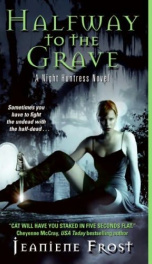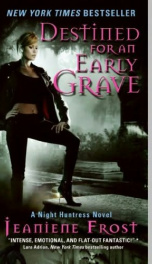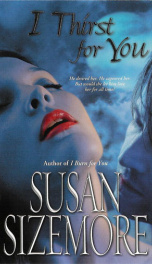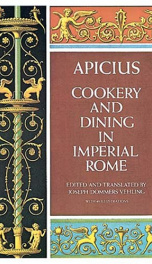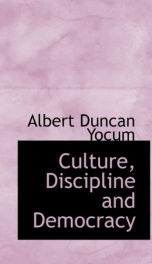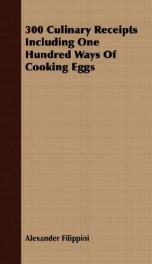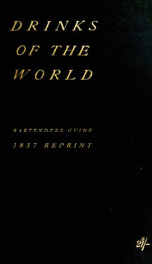Accum Friedrich Christian
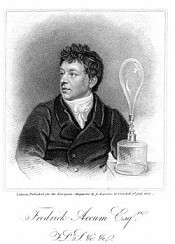
Friedrich Christian Accum or Frederick Accum (March 29, 1769 – June 28, 1838) was a German chemist, whose most important achievements were in the areas of gas lighting, the fight against poisonous foods, and the popularizing of chemistry.[1] Following an apprenticeship as an apothecary, Accum lived in London from 1793 and 1821, where, as a self-employed chemist, he manufactured and sold chemical and scientific instruments, gave fee-based public lectures in practical chemistry, and collaborated with various research institutions. Influenced by Frederick Winsor, who had been promoting the foundation of a company for the introduction of gas lighting in London, Accum became involved in the topic of gas lighting himself. At the behest of the Gas Light and Coke Company, he carried out many experiments on this subject and in 1812 became a member of the board of the same company. The use of gas lighting in both private and public areas spread through the establishment of the first large scale gas plant, in whose design Accum had been instrumental. His publications, most of which were written in English, are in a style accessible to the general public of the period. Accum in this way made important contributions to the popularization of chemistry in the period. In 1820, Accum published Treatise on Adulteration of Food, in which he denounced the use of poisoned foodstuffs. The work marked the beginning of a concern with nutrition. Accum was the first person to tackle the subject and to reach a wide audience with his work. Although his book sold extremely well, his attempts to raise public awareness in these areas made him many enemies among London foodstuff purveyors. Accum left England after a lawsuit was brought against him. He lived out the rest of his life as a teacher at an industrial institution in Berlin. Accum was born in Bückeburg, Schaumburg-Lippe, about 50 km (31 mi) west of Hanover. His father was from Vlotho an der Weser, and had been in an infantry regiment in the service of Count Wilhelm von Schaumburg-Lippe. In 1755, Accum's father converted from Judaism to Protestant Christianity. Soon after, he married Judith Berth La Mottein in Bückeburg. His wife was the daughter of a hat maker who was part of the French community in Berlin, and the granddaughter of a refugee of the Hugenot persecutions in France.[2] With his baptism, Accum changed his name from Markus Herz to Christian Accum. In addition to choosing the name "Christian", which means "follower of Christ", Accum's father chose to emphasize his conversion by adopting the surname Accum, which was derived from the Hebrew word "Akum", meaning "not-Jewish". It is not known whether he did this on his own initiative or because of pressure from his fiancee's family. In any case, after his marriage, Christian Accum became an independent shopkeeper and soap-maker, based at first at the house of his inlaws' in Bückeburg at 141 Schulstraße. He received citizenship in the city nine years after his marriage.[3] On May 9, 1772, three years after Accum's birth, his father Christian Accum died, at the age of 45. Friedrich Accum attended the Bückeburg Gymnasium Adolfinum and also received private tutelage in French and English. After his schooling, he finished an apprenticeship as an apothecary with the Brande family in Hanover, who were friends of the Accums.[4] The Brands also had a branch office in London and were the apothecaries to the Hanoverian King of England, George III.[5] London, as an important centre of scientific work at the end of the 18th century, was to be very attractive for young, scientifically inclined people from all over Europe.[6] Friedrich Accum went there in 1793 and worked as an assistant in the Brande apothecary in Arlington Street. After working as an apothecary with Brand's office, Accum pursued scientific studies and attended medical lectures at the School of Anatomy in Great Windmill Street. He made contact with the surgeon Anthony Carlisle (1768–1842) and the London chemist William Nicholson (1753–1815), in whose journal (Nicholson’s Journal)[7] he published his first article in 1798. On May 10, 1798 Accum married Mary Ann Simpson (March 6, 1777–March 1, 1816 in London). He had, in the intervening period, anglicized his name to "Frederick Accum". They had eight children in all, but only two survived past childhood. In the fall of 1799, a translation of Franz Carl Achard's ground-breaking work on the production of sugar from beets appeared in Nicholson’s Journal. Up until then, sugar cane which was grown overseas was the only plant from which sugar could be made. As this made possible the creation of a domestic sugar industry, it was greeted with great interest. A short time after the article's publication, Accum had samples of sugar beet sent from Berlin, and presented them to William Nicholson. They were the first sugar beets to arrive in England, and Nicholson published a detailed report of his investigations in the January edition of his journal, in which he established that sugar from beets was as good in taste as sugar from sugarcane.[8] In 1800, Accum and his family moved from 17 Haymarket to 11 Old Compton Street, where he was to live for the next twenty years, and which, in addition to serving as his house, was also a school, a laboratory where he performed experiments, and a store for chemicals and scientific instruments. On his business cards, which Accum used to advertise his services, he described his activities as follows: Mr Accum acquaints the Patrons and Amateurs of Chemistry that he continues to give private Courses of Lectures on Operative and Philosophical Chemistry, Practical Pharmacy and the Art of Analysis, as well as to take Resident Pupils in his House, and that he keeps constantly on sale in as pure a state as possible, all the Re-Agents and Articles of Research made use of in Experimental Chemistry, together with a complete Collection of Chemical Apparatus and Instruments calculated to Suit the conveniences of Different Purchasers.[9] Accum distributed a catalog of his wares from his Old Compton Street store and also sent it to other cities in England and abroad when requested. Accum's laboratory in Old Compton Street was for many years the only institution in England in which, in addition to theoretical lectures on chemistry, training in laboratory practice was also provided. Accum's teaching attracted, at least in part, a prominent audience. His listeners included the well-known London politician and later prime minister Lord Palmerston, the Duke of Bedford, and the Duke of Northumberland. In addition, Accums' laboratory was the first in Europe to be visited by students and scientists from the United States, among which were Benjamin Silliman and William Dandridge Peck. When Silliman later became Professor of chemistry at Yale College (precursor to Yale University) in New Haven, he ordered his first laboratory equipment from Accum in London. Accum's biographer, Charles Albert Browne, surmised in his 1925 work that some of the older American colleges still have sales receipts from Accum's London business.[10] With the development of new laboratory apparatus, Accum positioned himself in mid-market with respect to cost and usability. Amateurs could also perform simple chemical investigations in his establishment. Accum developed portable laboratory kits, intended for farmers, for the analysis of soils and stones. For prices ranging from three to eighty pounds sterling, these chests were the first truly portable laboratories.[11] In March 1801, Frederick Accum was offered a position at the Royal Institution in Ablemarle Street, a research institute founded two years earlier by Count Rumford.[12] He worked there as a laboratory assistant under Humphry Davy, who had been hired at same time as director of the laboratory, and would later become the president of the Royal Society. Accum’s employment at the Royal Institution was, however, not extended, as he left on his own initiative in September 1803. His biographer, R. J. Cole, conjectures that there was a connection with the contemporary departure for Paris of Count Rumford, who would marry Marie Lavoisier, the widow of famous chemist, Antoine-Laurent Lavoisier. Rumford had been the motivating force behind Accum’s hiring by the Royal Institution, and hence the possible connection with Accum’s exit.[13] Up to 1803, Accum published a series of articles in Nicholson’s Journal, which spanned a wide array of subjects: from investigating the possibility of determining the purity of medicines, to the existence of benzoic acids in vanilla extract, to observations about the explosivity of sulphur-phosphorus mixtures.[15] Of far greater significance was the 1803 publication of his System of Theoretical and Practical Chemistry. Cole, Accum's biographer, states that "it was the first text-book of general chemistry written in the English language to be based on Lavoisier's new principles; it is outstanding, also, in that it is written in a popular style, the subject matter being graduated as with a modern text-book."[16] Accum held his first lecture on chemistry and mineralogy in a small room in his house on Old Compton Street. His audience, however, grew so rapidly that he soon had to rent the Medical Theatre in Cork Street. Such was the interest among Londoners for Accum’s lectures that, after his resignation from the Royal Institution, he took a position at the Surrey Institution on Blackfriars Road. An advertisement in The Times on January 6, 1809 indicates that Accum offered a course on mineralogy and the chemical analysis of metals every Wednesday evening.[17] His increasing interest in mineralogy at this time is also apparent from the titles of two books which he authored between 1803 and 1809. The first was a two volume work which appeared in 1804 entitled A Practical Essay on the Analysis of Minerals and was subsequently reissued in 1808 as A Manual of Analytical Mineralogy. In 1809 he published Analysis of a Course of Lectures on Mineralogy. While at the Surrey Institution, Accum also published, beginning in 1808, a series of articles on the chemical properties and composition of mineral water in Alexander Tilloch's Philosophical Journal.[18]
do you like this author?
What readers are saying
What do you think? Write your own comment on this book!
write a commentWhat readers are saying
What do you think? Write your own comment on this author!
write a commentBook list

A Treatise on Adulterations of Food,and Culinary Poisons
Exhibiting the Fraudulent Sophistications of Bread,Beer,Wine,Spiritous Liquors,Tea,Coffee,Cream,Confectionery,Vinegar,Mustard,Pepper,Cheese,Olive Oil,Pickles,and Other Articles Employed in Domestic
Series:
Unknown
Year:
Unknown
Raiting:
4/5
Show more
add to favoritesadd In favorites

a treatise on adulteration of food and culinary poisons exhibiting the fraudul
Series:
Unknown
Year:
Unknown
Raiting:
5/5
Show more
add to favoritesadd In favorites
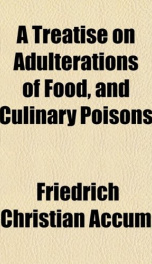
A Treatise on Adulterations of Food, and Culinary Poisons
Series:
Unknown
Year:
Unknown
Raiting:
4.5/5
Purchase of this book includes free trial access to www.million-books.com where you can read more than a million books for free. This is an OCR edition with typos. Excerpt from book: gallic acid, from the tea-leaves, than could be obtained from them under like circumstances by means of hard water. Many animals which are accustomed to drink soft water, refuse hard water. Horses in particular prefer the former. Pigeons refuse hard water when they have been accustomed to soft water. CHARACTERS OF GOOD WATER. A Good criterion of the purity of water fit for domestic purposes, is its softness. This quality is at once obvious by the touch, if we only wash our hands in it with soap. Good water should be beautifully transparent : a slight opacity indicates extraneousmatter. To judge of the perfect transparency of water, a quantity of it should be put into a deep glass vessel, the larger the better, so that we can look down perpendicularly into a considerable mass of the fluid; we may then readily discover the slightest degree of muddiness much better than if the water be viewed through the glass placed between the eye and the light. It should be perfectly colourless, devoid of odour, and its taste soft and agreeable. It should send out air-bubbles when poured from one vessel into another; it should boil pulse soft, and form with soap an uniform opaline fluid, which does not separate after standing for several hours. It is to the presence of common air and carbonic acid gas that common water owesits taste, and many of the good effects which it produces on animals and vegetables. Spring water, which contains more air, has a more lively taste than river water. Hence the insipid or vapid taste of newly boiled water, from which these gases are expelled : fish cannot live in water deprived of those elastic fluids. 100 cubic inches of the New River water, with which part of this metropolis is supplied, contains 2,25 of carbonic acid, and 1,25 of common air. ...
Show more
add to favoritesadd In favorites
Book list

A Treatise on Adulterations of Food,and Culinary Poisons
Exhibiting the Fraudulent Sophistications of Bread,Beer,Wine,Spiritous Liquors,Tea,Coffee,Cream,Confectionery,Vinegar,Mustard,Pepper,Cheese,Olive Oil,Pickles,and Other Articles Employed in Domestic
Series:
Unknown
Year:
Unknown
Raiting:
4/5
Show more
add to favoritesadd In favorites

a treatise on adulteration of food and culinary poisons exhibiting the fraudul
Series:
Unknown
Year:
Unknown
Raiting:
5/5
Show more
add to favoritesadd In favorites

A Treatise on Adulterations of Food, and Culinary Poisons
Series:
Unknown
Year:
Unknown
Raiting:
4.5/5
Purchase of this book includes free trial access to www.million-books.com where you can read more than a million books for free. This is an OCR edition with typos. Excerpt from book: gallic acid, from the tea-leaves, than could be obtained from them under like circumstances by means of hard water. Many animals which are accustomed to drink soft water, refuse hard water. Horses in particular prefer the former. Pigeons refuse hard water when they have been accustomed to soft water. CHARACTERS OF GOOD WATER. A Good criterion of the purity of water fit for domestic purposes, is its softness. This quality is at once obvious by the touch, if we only wash our hands in it with soap. Good water should be beautifully transparent : a slight opacity indicates extraneousmatter. To judge of the perfect transparency of water, a quantity of it should be put into a deep glass vessel, the larger the better, so that we can look down perpendicularly into a considerable mass of the fluid; we may then readily discover the slightest degree of muddiness much better than if the water be viewed through the glass placed between the eye and the light. It should be perfectly colourless, devoid of odour, and its taste soft and agreeable. It should send out air-bubbles when poured from one vessel into another; it should boil pulse soft, and form with soap an uniform opaline fluid, which does not separate after standing for several hours. It is to the presence of common air and carbonic acid gas that common water owesits taste, and many of the good effects which it produces on animals and vegetables. Spring water, which contains more air, has a more lively taste than river water. Hence the insipid or vapid taste of newly boiled water, from which these gases are expelled : fish cannot live in water deprived of those elastic fluids. 100 cubic inches of the New River water, with which part of this metropolis is supplied, contains 2,25 of carbonic acid, and 1,25 of common air. ...
Show more
add to favoritesadd In favorites
What readers are saying
What do you think? Write your own comment on this author!
write a commentif you like Accum Friedrich Christian try:
readers also enjoyed
What readers are saying
What do you think? Write your own comment on this author!
write a commentGenre
if you like Accum Friedrich Christian try:
readers also enjoyed
Do you want to read a book that interests you? It’s EASY!
Create an account and send a request for reading to other users on the Webpage of the book!


